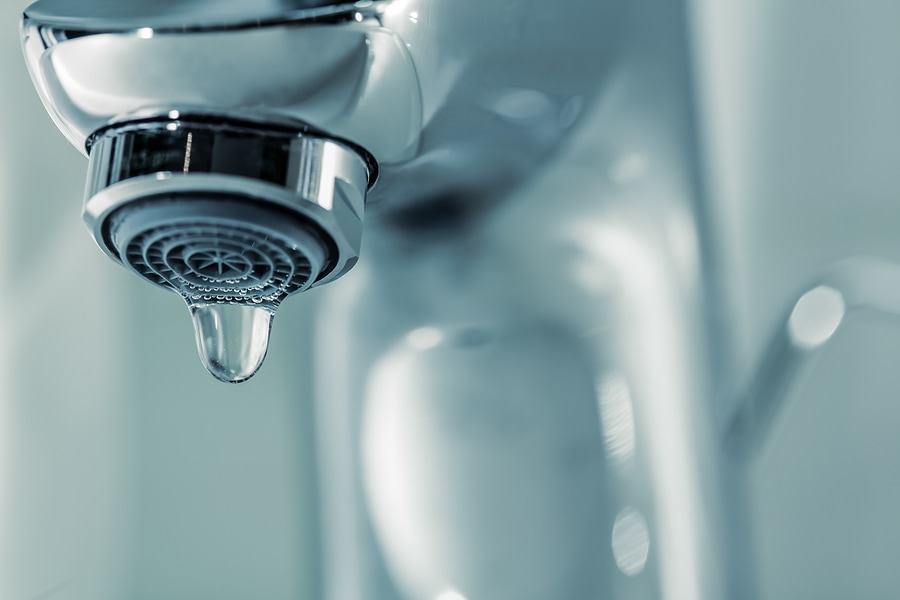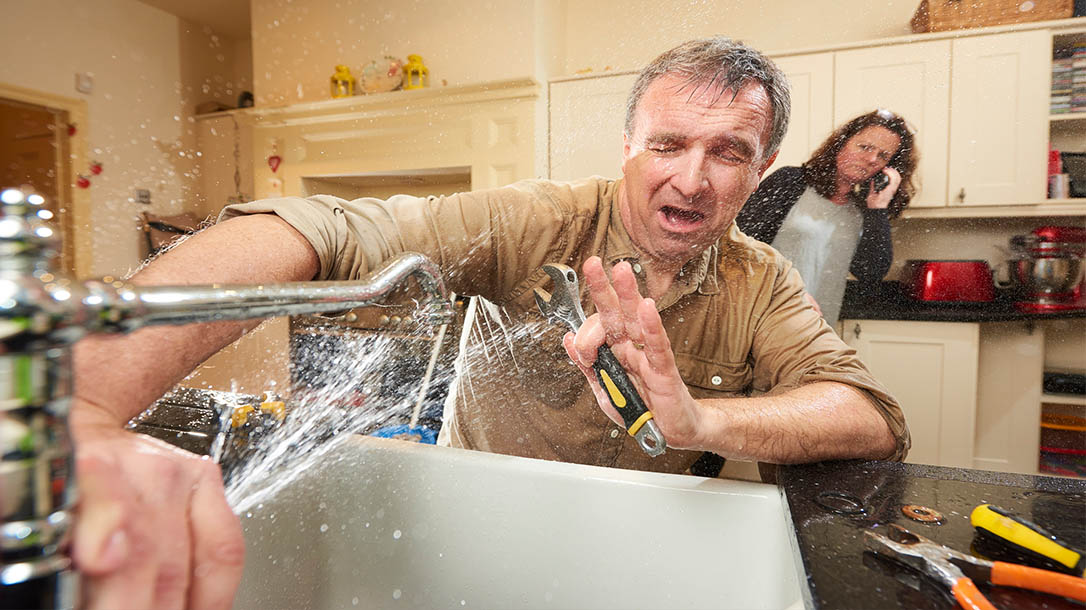Your Upsides of Resolving a Malfunctioning Faucet
Your Upsides of Resolving a Malfunctioning Faucet
Blog Article
They are making a number of great points relating to Why Is It Important To Fix Your Leaking Tap/Faucet? overall in this content underneath.

Dripping taps could look like a small inconvenience, however their influence goes beyond just the aggravation of the sound. From wasting water to incurring unnecessary monetary costs and health risks, ignoring a leaking tap can cause various consequences. In this write-up, we'll look into why it's essential to address this common family issue without delay and successfully.
Wastage of Water
Ecological Impact
Trickling faucets add substantially to water wastage. According to the Epa (EPA), a solitary faucet leaking at one drip per secondly can waste greater than 3,000 gallons of water each year. This not just strains water resources however additionally influences communities and wild animals depending on them.
Financial Prices
Increased Water Bills
Beyond the environmental impact, dripping faucets can inflate water bills substantially. The built up wastage over time translates right into greater energy costs, which could have been avoided with prompt fixings.
Possible Building Damages
Furthermore, prolonged trickling can cause damage to components and surfaces bordering the tap. Water accumulation can create staining, rust, and even architectural issues if left neglected, resulting in added repair work expenses.
Health and wellness Worries
Mold And Mildew and Mold Development
The constant existence of moisture from a trickling tap creates a perfect environment for mold and mildew and mold development. These fungi not just compromise indoor air top quality but also position health dangers, especially for individuals with respiratory system problems or allergic reactions.
Waterborne Illness
Stationary water in leaking taps can come to be a breeding ground for bacteria and various other microorganisms, enhancing the danger of waterborne illness. Contaminants such as Legionella microorganisms prosper in stagnant water, potentially leading to significant diseases when consumed or inhaled.
Do it yourself vs. Professional Repair
Pros and Cons of DIY Fixing
While some may attempt to repair a leaking tap themselves, do it yourself repairs feature their very own set of difficulties. Without correct knowledge and tools, DIY attempts can worsen the problem or bring about insufficient fixings, lengthening the trouble.
Advantages of Employing a Professional Plumber
Employing a specialist plumber guarantees that the underlying reason for the trickling tap is dealt with successfully. Plumbings possess the knowledge and equipment to diagnose and fix faucet issues effectively, saving time and reducing the risk of additional damages.
Step-by-Step Overview to Fixing a Dripping Tap
Devices Needed
Before trying to take care of a leaking faucet, collect the required devices, consisting of a flexible wrench, screwdrivers, substitute components (such as washers or cartridges), and plumber's tape.
Common Faucet Issues and Their Solutions
Identify the kind of faucet and the particular issue triggering the drip. Common troubles consist of damaged washing machines, rusty valve seats, or defective O-rings. Refer to producer directions or online tutorials for detailed guidance on repair work.
Safety nets
Regular Upkeep Tips
To avoid dripping taps, do regular maintenance such as cleaning up aerators, evaluating for leaks, and replacing worn-out parts quickly. Furthermore, think about setting up water-saving gadgets or upgrading to much more efficient fixtures.
Importance of Prompt Repairs
Addressing leaking faucets as soon as they're seen protects against further water wastage and potential damage, eventually saving both water and money over time.
Effect On Residential Or Commercial Property Value
Assumption of Well-Maintained Property
Keeping a building in good condition, including resolving maintenance concerns like dripping taps, enhances its viewed worth and value amongst potential purchasers or lessees.
Impact on Resale Worth
Residences with properly maintained plumbing fixtures, including taps, command higher resale worths in the property market. Dealing with leaking taps can contribute to a favorable perception throughout building evaluations and negotiations.
Environmental Duty
Specific Payment to Conservation
Taking obligation for taking care of leaking faucets aligns with broader initiatives towards water conservation and environmental sustainability. Every person's actions collectively make a significant impact on maintaining precious sources.
Sustainable Living Practices
By prioritizing timely repair work and taking on water-saving practices, people contribute to lasting living practices that profit both present and future generations.
Final thought
Addressing a leaking tap goes beyond plain convenience; it's a crucial step toward saving water, reducing financial expenses, and guarding health and residential property. Whether via DIY repair work or expert help, doing something about it to deal with trickling taps is a tiny yet impactful means to advertise liable stewardship of sources and add to a healthier, much more sustainable future.
Why Are My Faucets Dripping (And Can I Fix it Myself)?
Causes of a Dripping or Leaking Faucet
Whether you’re hearing drops of water falling and hitting a sink, or noticing water ooze out from the base of the spout, you shouldn’t ignore a dripping or leaking faucet. And, the good news is, sometimes you can fix the problem yourself.
In this article, we’ll review a few common causes of dripping and leaky. We’ll also walk you through some basic ways to find the problem and handle it without calling anyone — and let you know when to call in a pro.
But, no matter what the cause, or whether you can handle it on your own, the sooner you address it, the better.
Each drip may be a tiny amount of water. But, they all add up quickly. According to the U.S. Geological Survey, one faucet losing one drop every 20 seconds — five a minute — wastes around a liter of water every day, and 173 gallons a year.
Add in more than one in your house, and it’s a lot of water to waste. So, we’ll help you get to the bottom of things quickly.
Four Reasons Your Faucet May Be Dripping
Aerator is Damaged or Unseated Valve Seat is Corroded O Ring is Loose or Worn Out Part of the Assembly is Loose Aerator is Damaged or Unseated
If you unscrew the end of your faucet, you’ll find the aerator. It’s the little stem piece with a screen on it that shuts off the water circulation.
If it’s damaged, or if it’s not sitting right, it will allow water to pass through.
Valve Seat is Corroded
Next is the valve seat, which is connected to the washer. If the washer wasn’t in place correctly, then it could have ground against the seat. Over time, this damages the valve seat.
The problem could also be corrosion: Over time, the part has worn out, and it’s now allowing water to pass through.
O Ring is Loose or Worn Out
Since the o ring is only a small rubber gasket, it’s a common reason why the faucet is dripping. You’ll find it at the base of the faucet, and it’s there to keep water from coming out where it’s not supposed to.
However, it’s common for the o ring to wear out over time. When it does, you’ll notice a drip.
Part of the Assembly is Loose
So far, we’ve looked at a few small, specific parts. But, the problem could be anywhere in the assembly if something’s out of place.
Even if a part isn’t damaged, over time, it may have become loose or dislodged. It could be the parts we mentioned, or the aerator at the tip of the faucet, the stem itself,
Can I Fix a Leaky Faucet Myself?
Depending on the problem, and how handy you are, there’s a chance you can fix a leaky faucet without calling a professional. But, you do run the risk of making the problem worse.
If it’s a small drip, you can certainly try a few troubleshooting tactics. We’ll walk you through them in a moment.
But, no matter what, your first step should be shutting off the water coming into the faucet. You should find a shutoff valve under the sink on the pipes leading to it. Turn each one clockwise until they close tightly.
Next, make sure you have the right tools for whatever you’re attempting. It’s tempting to make do with what you have. But, you need the right ones for a reason: You’re often dealing with small parts that can break if you handle them carelessly.
If you’re feeling confident, here are some places to start.
Items Near the Tip of the Faucet
A few of the parts we mentioned — particularly the valve seat and washer — are located at the tip of the faucet where the water comes out. They’re easy to access, making it a good place to start.
Check the O Ring
To check the o ring, you’ll need to take off the spout at the base. It’s easiest on kitchen sinks with long spouts, versus the smaller, bulkier base on most bathroom sinks.
Either way, this can be tricky, so do it carefully and don’t force anything. If it’s not coming right off, you’re much better off calling in a pro than possibly breaking something.
For a kitchen sink, there’s usually a nut or coupling assembly at the base of the spout. These often slide off easily without using any tools.
Once you’ve disassembled those parts, gently but forcefully twist off the spout.
Then, you can see the o rings. There should be two of the rubber gaskets on the base. If they look worn or damaged, replace them, and see if that solves the problem.

As a devoted person who reads on Water Dripping from Faucet: Why and How to Fix, I thought sharing that post was worthwhile. Enjoyed reading our blog entry? Please quickly share it. Let someone else check it out. Thanks for your time. Kindly visit our blog back soon.
Report this page